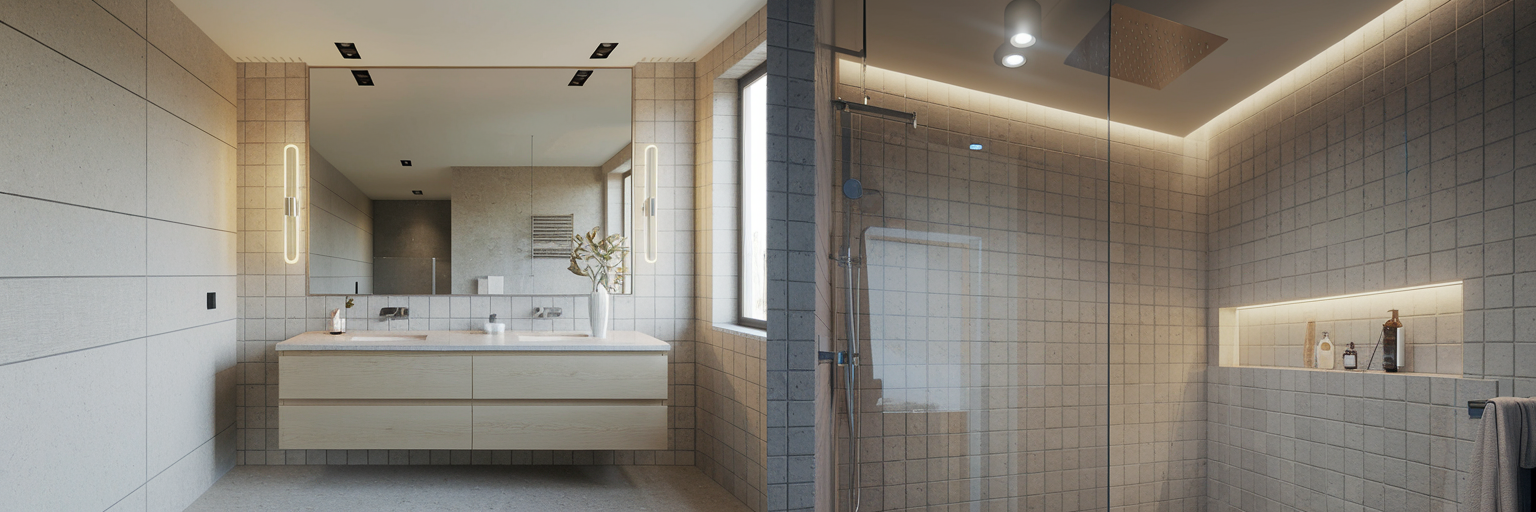230V vs 12V LED lights in bathroom

230 Volt versus 12 Volt LED lighting in the bathroom
Both 230 V and 12 V recessed spots can be installed in a bathroom. The key to choosing safely is the IP rating and the zone where the light will be placed. Below we explain the bathroom zones, the minimum IP per zone, and how to decide between 230 V and 12 V in each situation.
Bathroom zones & minimum IP ratings
The IP rating indicates how well a product is protected against water ingress. Choose the IP level to match the zone so fixtures can safely handle water exposure.
| Zone | Minimum IP rating | Typical exposure |
|---|---|---|
| 0 | IP67 | Inside bath/shower tray (underwater) |
| 1 | IP65 | Direct spray from shower |
| 2 | IP44 | Splash zone around bath/shower/washbasin |
| 3 | IP21 | General area; condensation but no direct water |
Note: These are minimum recommendations. You may always choose a higher IP (e.g., IP65 in zones 2–3) for extra protection. Do not use a lower IP than specified (e.g., never place IP21 in Zone 0).
230 V vs 12 V in the bathroom
- 12 V (SELV) spots are common in zones with higher water exposure. They use a driver/transformer and are often preferred for added safety perception near water.
- 230 V spots can also be used in bathrooms, provided the fixture’s IP rating matches the zone. Standard 230 V lamps may be less suitable unless installed in a watertight (high-IP) luminaire.
- Always match the IP rating to the zone. For immersion (Zone 0), use at least IP67; for direct spray (Zone 1), at least IP65; for splash areas (Zone 2), at least IP44; for general areas (Zone 3), at least IP21.
Conclusion
Yes—both 230 V and 12 V recessed spots are possible in a bathroom. What matters most is the correct IP rating for the zone. If you opt for 230 V in more exposed areas, ensure the fixture is waterproof (e.g., IP65/IP67). Using the right IP rating in the right zone prevents unsafe situations and extends product life.
Explore our bathroom lighting
Bathroom lighting is crucial for comfort and safety. Modern bathroom fixtures must meet strict safety rules because electricity and moisture don’t mix. Discover the categories that help you create optimal lighting in your bathroom. After choosing a category, you can filter by colour and material.
Safety reminder: Always follow local wiring regulations. When in doubt about zones, IP ratings, or driver placement, consult a qualified electrician.




